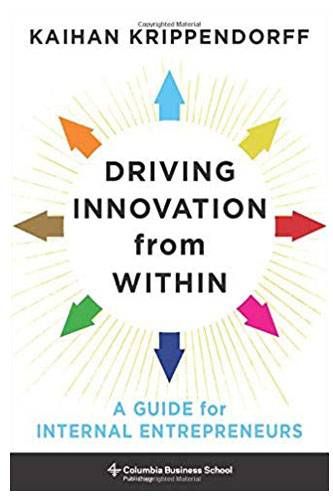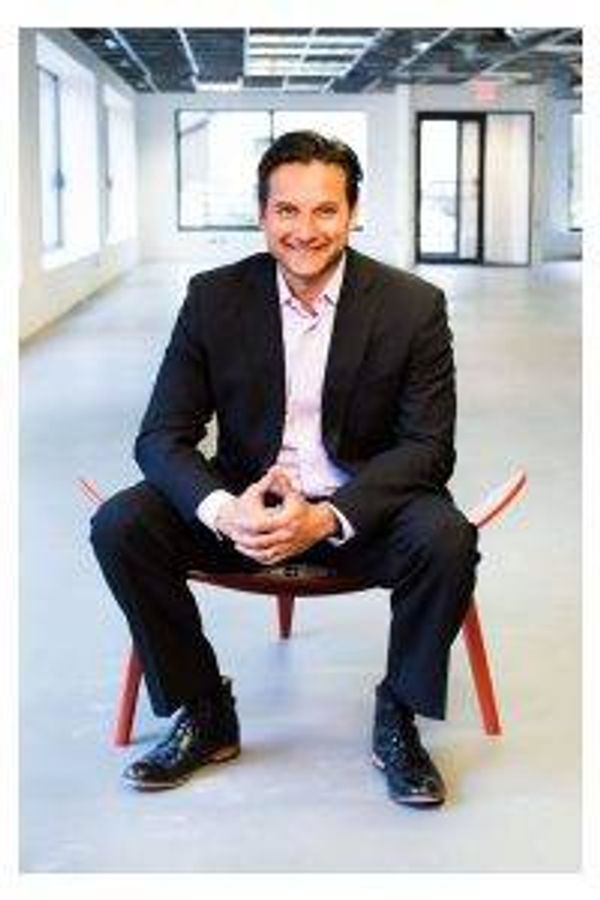Looking for Purpose at Work? Be an Intrapreneur
Advice from the author of the new book, 'Driving Innovation From Within'

We often think of successful entrepreneurs as fanatical types — often young — dreaming up brilliant ideas and then taking them to market. But would you believe that over 70% of the most transformative innovations in the past 30 years came from corporate employees known as intrapreneurs?

That’s what business strategist Kaihan Krippendorff discovered when researching his new book about internal innovators: Driving Innovation From Within. And when I recently interviewed him about this, Krippendorff said that people in their 50s and 60s are frequently the most successful intrapreneurs (sometimes called internal innovators and internal entrepreneurs).
“I interviewed a hundred and fifty internal innovators and I’d say more than half of them are above fifty,” Krippendorff, founder of Outthinker and the Outthinker Strategy Network told me. “They have a lot of institutional knowledge and business relationships and they understand the political dynamics that can guide them through their organization.”
"The prolific ones recognize they didn't have to eat ramen noodles and put their children's financial future at risk."
Here’s more of what Krippendorff, a former consultant for the global management consulting firm McKinsey, said about how to pursue your passion as an intrapreneur, people who've done it well, advantages intrapreneurs have over entrepreneurs, and the big mistake to avoid:
Next Avenue: What is an internal entrepreneur?
It’s like an entrepreneur, but is someone who doesn’t quit his or her job. Instead, the person sees an opportunity and rallies resources from an established company…The three things you need are a market need, a company need and passion.
What makes internal entrepreneurs different from traditional entrepreneurs?
They’re not typically motivated by money. But the prolific ones recognize they didn’t have to eat ramen noodles and put their children’s financial future at risk. They enjoy being an innovator because it’s fun or because of the impact they have.
Another difference is the way they approach risk. They look like they’re risk takers, but they’re creating risk-asymmetric situations where the company bets a little with the potential to benefit a lot. They’re not playing with their money, but with the company’s money.
How do employers feel about internal entrepreneurs?
I think every company will say they love people to be more entrepreneurial and encourage internal entrepreneurs. But cultural norms and structural things at companies discourage it.
Are more employers looking for internal entrepreneurs?

Definitely, the trend is toward encouraging greater internal innovation.
I looked at companies on the Fortune and Forbes most innovative lists over the last five years and what you see are these companies encourage broad entrepreneurial behavior across the organization. They’re not cordoning it off and having one team that might do it. In their culture, everyone can be an innovator.
Who are a few examples of internal entrepreneurs who’ve been successful?
Jean Feiwel, a senior vice president at Macmillan Publishers, is a great example. She’s the person who inspired me to write the book. She’s been an innovator her whole life; she was part of the team that signed the first Harry Potter book in the U.S. and was behind the Goosebumps series [scary novels for kids].
Hewlett-Packard eventually awarded House its ‘medal of defiance’ recognizing ‘extraordinary contempt and defiance beyond the normal call of engineering duty.’
She loves her company and publishing and believes the world needs the high-quality editing process of professional publishing. She had the idea for what she called Romance 2.0 — a platform of self-published authors who shared their books with readers before the books were published. She thought readers would get a kick out of helping the author perfect the manuscript.
When she first had the idea, she sent out an email to people at Macmillan and described it. She said: ‘If you’re interested, let’s have lunch and talk about it over pizza.’ She thought if seven people show up, she’d do it. If fewer did, she wouldn’t. And about thirty people showed up. It’s now known as Swoon Reads, the leading crowdsourced platform to help undiscovered romance writers refine their manuscripts and find their audience.
That’s an aspect of successful internal innovators: being able to build a groundswell of support. Jean found people in logistics, accounting and marketing who loved the idea. Then they did a prototype and put together a fake website to learn from it. And then her boss started taking notice and gave the team a little money to do it. Swoon Reads launched four years later.
Another example I like is Chuck House. He was an engineer at Hewlett-Packard in the 1960s and was working on a project building large-scale electrostatic displays — like a big TV connected to a computer. David Packard visited the research lab and wanted to kill House’s idea. He said to House: ‘I don’t want to see it when I come back next year.’
House interpreted that differently as meaning: ‘I need to get it out of R&D in less than a year.’ So, he worked on it on his own time, took prototypes to customers and came back with orders.
Because he did this, we got to see Neil Armstrong land on the moon. If he hadn’t, we would’ve only heard Armstrong say ‘That’s one small step for man.’
Hewlett-Packard eventually awarded House its ‘medal of defiance’ recognizing ‘extraordinary contempt and defiance beyond the normal call of engineering duty.’
You say there are 4 factors that invigorate internal innovators and give them great advantage: They have scale that entrepreneurs can’t easily match; they have access to multiple capabilities under one roof; they can take advantage of resources their company has to invest and they can diversify risk. Can you talk about some of these?
Scale and capabilities together play to your strengths if you find an innovation that works. It’s tough to find an idea your company loves, but once you do, it scales very quickly.
How should people who think they have an innovative idea approach their employers to let them try to do it?
Don’t take it immediately to your boss, unless you really know it’s a good idea. Organizations are rarely able to deal with ideas that carry uncertainty.
So, think of all the possible uncertainties and rank them with the critical one on top. Then say to yourself: ‘What is an inexpensive experiment I could run to test that assumption?’
Jean at Macmillan created a fake website to see what people would think.
What’s a big mistake people make as internal entrepreneurs?
Doing a cash-flow projection that covers all assumptions and then going to the boss to ask for funding. That’s right for mature ideas; it’s absolutely wrong for immature, young ones.
The problem is: the data doesn’t exist for them. Reid Hoffman [founder of LinkedIn] said: ‘You can’t run a financial projection on how someone will react to a product if nobody has seen the product.’
Is being an internal innovator frustrating?
It’s going to be tough. Steve Wozniak was rejected five times at Hewlett-Packard for his idea, which later became Apple. A new idea will create resistance. You want to see each barrier not as a reason to give up, but as another problem to solve.
(This article is part of America’s Entrepreneurs, a Next Avenue initiative made possible by the Richard M. Schulze Family Foundation and EIX, the Entrepreneur and Innovation Exchange.)


